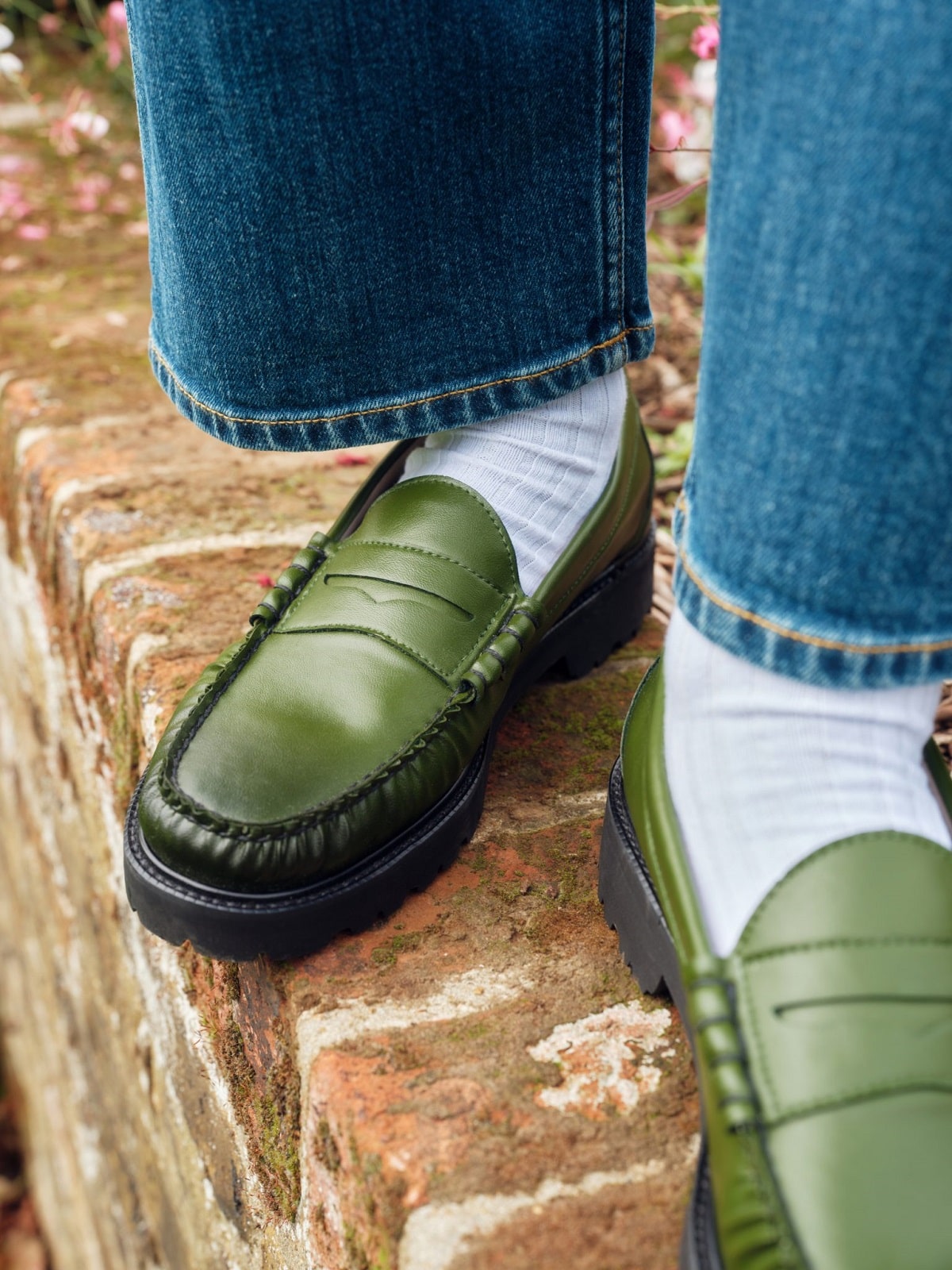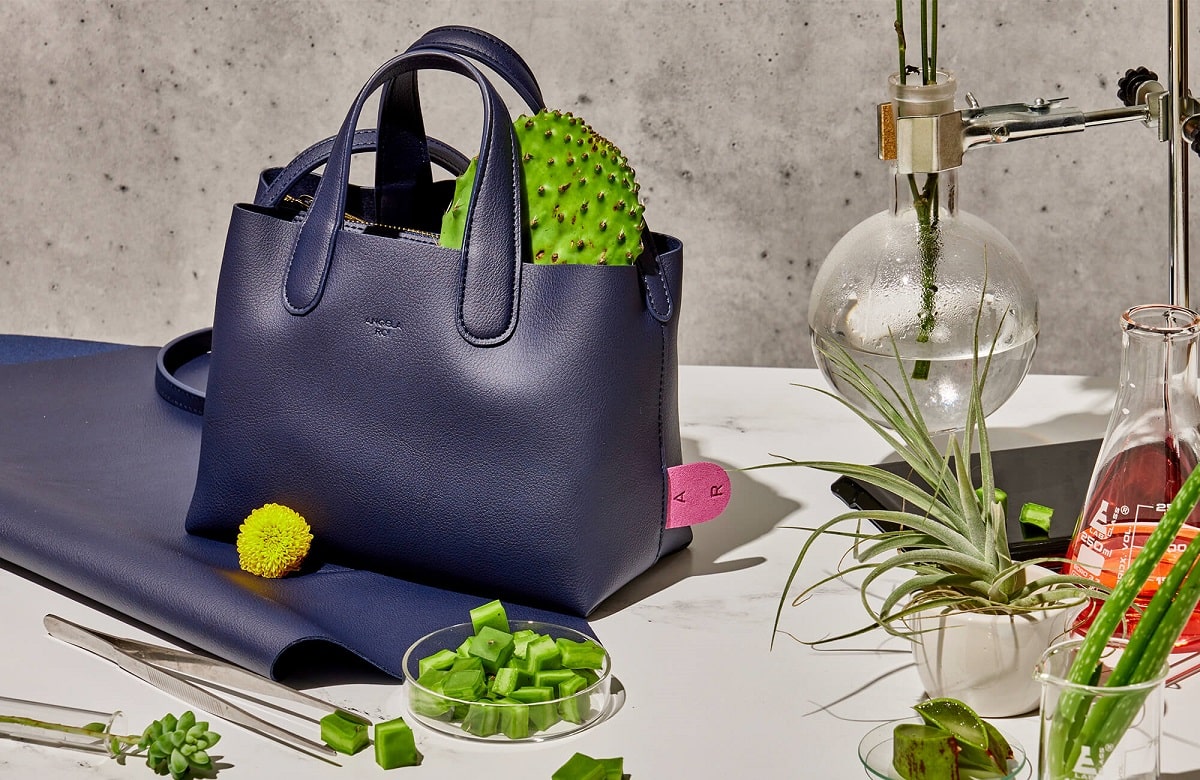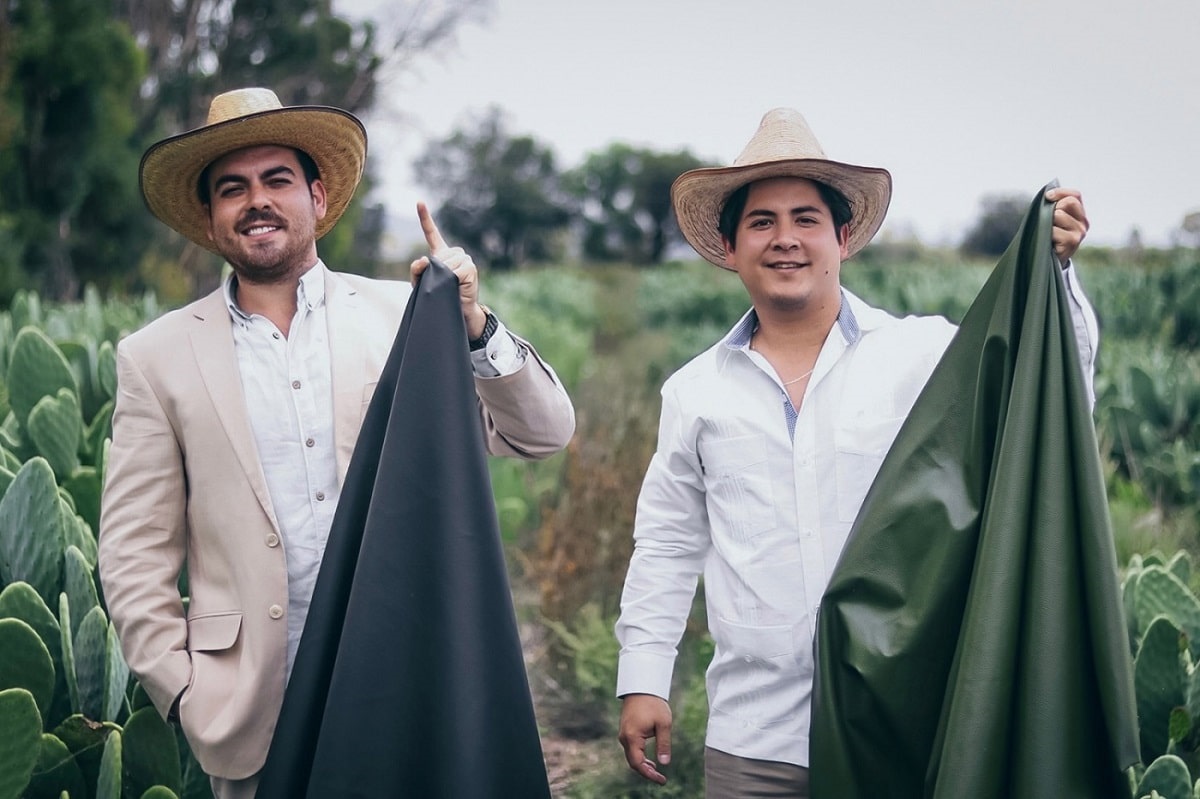1
HOME > Trends >
WHAT IS CACTUS LEATHER?
Written by Ivan Yaskey in Trends on the 8th November 2022

We’ve seen a number of bio-based vegan leathers introduced over the past few years, from apple, mushroom, and pineapple leaf-sourced solutions to collagen-simulated sheets. Expanding this group is cactus leather, a material unveiled back in 2019 that has started to gain some traction due to being featured in a Milan Fashion Week presentation. Despite this visibility, adoption of this partially biodegradable material has been gradual, from shoes, bags, wallets, and jackets to seating in cars. Requiring minimal water to grow, being a renewable resource, and helping manage carbon dioxide make it more sustainable compared to other vegan leathers introduced thus far, particularly synthetics like polyurethane and PVC.
How is Cactus Leather Created?
Labeled an organic material, cactus leather is sourced from Mexico’s Nopal or prickly pear cactus and, compared to other vegan options, offers greater tear, abrasion, and water resistance and breathability. So far, Desserto, also based in Mexico, has been the sole supplier of cactus leather. No herbicides or pesticides are used in farming, and just rainwater and the region’s minerals are needed to support their growth. Done roughly every six months, harvesting involves cutting off fully mature pads or leaves: This practice doesn’t damage or harm the rest of the plant, and the leaves will, in fact grow back. This approach eliminates having to cut down the full plant. Instead, the cactus can continue growing and producing in this manner for about eight years. To make the actual leather, the leaves are ground and dried in the sun for three to five days. This helps separate their components, allowing fibers to be removed and a protein powder to be created. This protein, along with other ingredients, becomes a liquid bio-resin, which is then poured onto a textile, including cotton, polyester, or a blend. The result is a smooth, partially biodegradable, waterproof material that can be used for apparel, footwear, and upholstery applications.

Compared to other vegan leather solutions:
- Fields of Nopal cactus don’t require irrigation, resulting in far less water consumed and a drought-resistant source, and can handle dry, arid conditions that see low annual amounts of rainfall (200 to 300mm).
- Compared to other water-heavy sources like cotton, Nopal cacti require 200 liters for every 1kg, and can additionally draw in water from humidity.
- There’s potential – although not fully explored yet – to have these plants grow on damaged, lower-quality land, where traditional crops are less likely to thrive.
- Cacti fields absorb carbon dioxide from the atmosphere and help the soil better hold onto it.
- One linear meter of material requires just three leaves.
- Leftover components are used as feedstock for the local food industry, helping reduce waste.
- No tanning process is involved, and even compared to polyurethane, cactus leather has a 10-percent lower eutrophication impact.
- The percentage of biodegradability varies, however. Desserto has developed a material using 92-percent organic content from other plant sources. On the other hand, materials using polyester are less biodegradable.
Brands Using Cactus Leather
As of 2022, Desserto remains the only manufacturer of cactus leather. The material came to light in 2019, when creators Adrián López Velarde and Marte Cázarez introduced it at Milan’s Lineapelle event. Through two years of testing and research, they uncovered an organic, more sustainable leather alternative that also reduced the amount of plastic pollution generated through synthetic types of vegan leather. The product also meets the mechanical properties needed for furniture and car upholstery. They estimate that wider adoption could reduce textile-related plastic waste by over 40 percent and cut down on related water consumption by about 20 percent. About three years since its introduction, other brands have started incorporating it as a vegan leather alternative. More prominently, German designer Sarah Regensburger utilized the material for her collection displayed at Milan Fashion Week this past fall. Along with this offering, a handful of brands more closely related to menswear have started using cactus leather:

CLAE
Around for over two decades, CLAE partnered with Desserto to offer a line of vegan dress sneakers using cactus leather, as well as recycled nylon and latex sourced from Hevea tree sap. ###Origio Origio has become known for its barefoot trainers: Contrary to the “barefoot” trail running shoe, these simply utilize the foot’s natural design to enhance contact with the ground and subsequently nature to improve balance. The brand has used natural materials in the past to reduce its environmental impact and, in this direction, has experimented with cactus leather.
Deadwood
With its founders meeting while working in a denim shop together, Deadwood started as a curated offering of vintage and emerging brands and eventually grew into its own “slower” fashion brand. That has included creating garments out of deadstock, upcycled materials, and factory leftovers and, as of recent, more sustainable options like cactus leather.
SENTIENT
Aiming to use no animal-sourced materials, SENTIENT is a unisex, sustainably minded brand that has tried out cactus leather through its moto jackets and bags. While the company refuses to call itself sustainable due to the impact of the global supply chain, they’ve made an effort to utilize natural materials associated with a lower emissions impact and ensure garments are crafted by workers receiving fair pay and in a hazard-free environment.

Understated Leather
Seen on celebrities, Understated Leather lives up to its name through a classic aesthetic reflective of owner Jennifer Kassell’s Australia-meets-American Southwest background. Leaning toward womenswear but providing some unisex offerings, the brand has attempted to incorporate cactus leather within its more recent collections.
BOTKA
Standing for “Be The Key,” BOTKA started four years ago as a vegan-focused fashion line intending to incorporate plant-based, recycled, and natural materials. Desserto and Piñatex are both used as more sustainable alternatives.
Paulo Camargo Design
Based in Portugal and manufacturing out of Brazil, Paulo Camargo has sought out more eco-friendly, cruelty-free materials for his eponymous line spanning men’s and women’s bags. Piñatex and Desserto’s cactus leather have been used for some of their current offerings.

Trending
2
3
4
5
6
7
8
9
10










